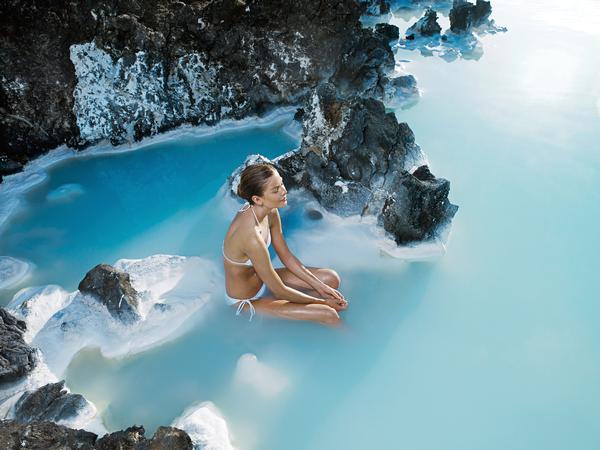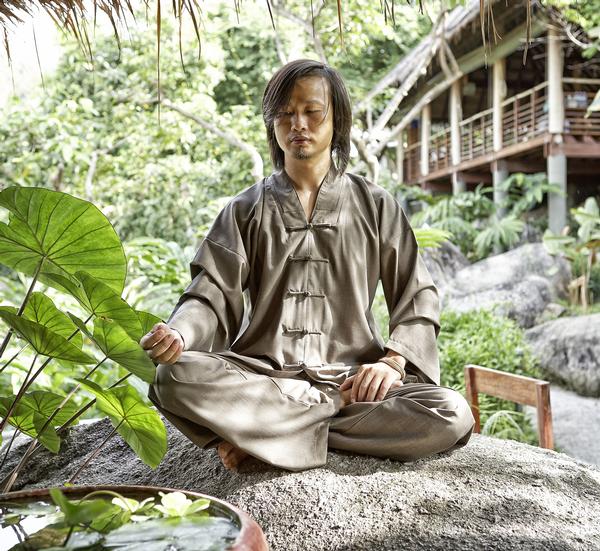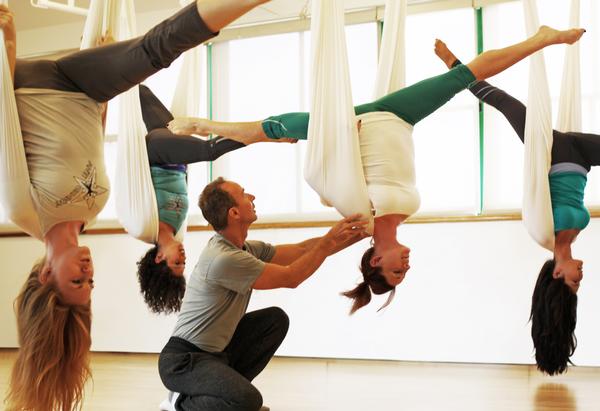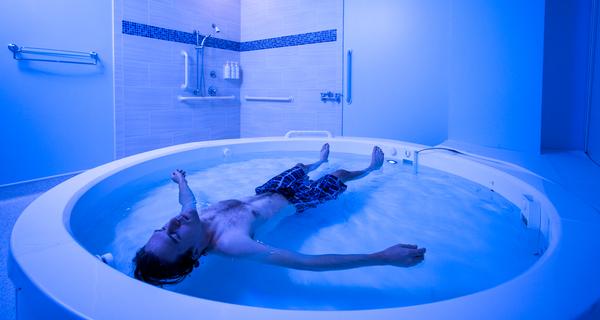
|
 |
Health Club Management Handbook - Spa Foresight™ 2017

Industry insights

|
|
| Spa Foresight™ 2017
|

What’s coming down the track for the global spa and wellness industries?
We examine the trends, technologies and strategies that will shape the future
|
|
|

|
1. Flexible Scheduling

WALK-IN SPAS

The typical spa business model is therapist + client + treatment room = booking. This model is hugely inefficient, leading to a very high level of turnaways in most types of spas.
We expect new business models to emerge which find ways around these constraints by offering spa and wellness experiences that are more flexible in terms of the timed allocation of resources and what’s on offer. Imagine taking a ticket for a massage when you arrive and then spending time in hot pools or a relaxation space while you wait your turn.
|

|
2. Harnessing Nature

IMMUNE CHALLENGE PROGRAMMES

Medical research is increasingly focusing on harnessing the power of the immune system to both prevent and cure disease.
Researchers are now indicating that living in over-clean, sterile environments removes so many challenges to the immune system that it can leave people weakened and open to a range of diseases from cancer to auto immune disorders.
Just as immunisation programmes are used by doctors to build immunity against certain diseases, so we expect spas to begin to offer retreats and treatments which focus on immune system transformation by offering immune system challenges and treatments.
By enabling the body to build more powerful responses to threats, deterioration and disease, these retreats and treatments will amplify the body’s own ability to fight disease using natural rather than pharmaceutical interventions.
| |


|
| shutterstock/Olena Zaskochenko |

Living in over-clean environments removes challenges to the immune system |
|

|
3. Hot Prospect

ICELAND

Tourism is heating up on the volcanic island of Iceland, having grown by 100 per cent since 2006 and set to reach the three million mark by 2020 – not bad for a country with a population of only 320,000. This influx of visitors will pave the way for upcoming hotel and spa businesses.
Iceland’s airlines have been key to this boom, offering an increasing number of direct and stopover flights between North America and Europe.
Capital controls in place since the 2008 economic crash have also seen the country’s pension funds – worth around ISK1,2tn (US$10.7bn, €9.9bn, £8.6bn) – restricted to domestic investments. Tourism projects, including the US$2.5m (€2.3m, £2m) Ice Cave, were welcome recipients.
Trendy cafes and boutique shops are also making an appearance. As are cool design-led hotels such as Marriott’s Edition, which will open next to Reykjavik’s iconic Harpa Concert Hall and Conference Centre by 2019 – with Bill Gates one of the reported major investors in the development.
The famous Blue Lagoon thermal spa is also undergoing a major expansion, while the country’s alluring lunar-like landscape dotted with natural hot springs is a big hit with wellness lovers.
Given this potent mix, we feel that Iceland will prove to be a recipe for success for spa operators of the future.
| |


|

The famous Blue Lagoon is expanding in response to Iceland’s tourism boom |
|

|
4 New Discoveries

SKIN SCIENCE

Modern science is redefining the way we think about skin, and this will have a huge impact on the spa experience.
New research shows skin has both hearing and seeing sensors, suggesting there’s a greater synergy between the lighting and music in treatment rooms and the effects of bodywork.
Discoveries focusing on how we’re wired for ‘social touch’ show we react differently to the speed or pressure of touch. Clients massaged gently are likely to tip more, for example, and feel the benefits long after a treatment.
With this in mind, it’s likely spas will have more impact on society’s wellbeing than we can imagine.
|

|
5 The Pampered Journey

SPA PLANES

Finding windows of time for self-care can be challenging for people living in today’s super fast urban lifestyle.
We expect operators to widen their search for these time windows to the transport industry, with planes an obvious starting point.
Air travel is uncomfortable and for those who can afford it, the chance to travel on a plane which has been fully fitted out as a spa, with treatments, healthy food and relaxation to while away the journey, would be appealing.
This thinking could be extended to other modes of public transport such as buses and trains.
|

|
6. Ripe for Investment

SCALEABLE WELLNESS

With an increasing movement towards all things wellness, more equity firms are scoping out potential projects in the wellbeing and spa sector.
According to Omer Isvan, owner of international investment company Servotel, scaleable wellness is where investors are now heading.
There’s something magical about destination spas which offer truly authentic, transformational experiences that keep guests coming back year after year, says Isvan. He claims that investors are keeping a close eye on such concepts, which could potentially be replicated in a credible way in a resort setting.
Isvan also sees an opportunity for third-party wellness operators to run specialist facilities for hotels and resorts in much the same way as they do spas.
| |


|
| Kamalaya wellness sanctuary, Thailand |

Can destination spas like Kamalaya in Thailand be replicated in a resort setting? |
|

|
7. Deeper into the Biome

THE VIROME

We’re becoming familiar with the biome – the billions of bacteria and viruses which live synergistically inside our bodies, controlling all sorts of functions.
Biome-boosting treatments, diets and other interventions increasingly feature on spa menus the world over.
Now new science is emerging which is enabling us to better understand the impact viruses can have on our health. Scientists are calling this the virome.
We’ve grown used to viewing viruses as simply a source of disease, but researchers are exploring hidden parts of the biome and discovering that we may be able to use viruses to keep healthy.
It’s thought that – just as there are ‘good’ and ‘bad’ bacteria – so we will find there are ‘good’ and ‘bad’ viruses.
Vincent Racaniello, who studies viruses at Columbia University says: “If we can make a connection between beneficial viruses and good health, the next step will be to try to manipulate them to improve our health and wellbeing.”
A deeper understanding of viruses – which carry one-fiftieth as much genetic information as bacteria – is becoming possible as a result of new probes, which researchers are using to map the virome.
Spa and wellness operators will eventually be able to add virome-boosting treatments and protocols to their menus.
| |


|
| photo: shutterstock/llaszlo |

The study of viruses will open up new treatments to improve health and wellbeing |
|

|
8. Noteworthy benefits

SINGING

For the past six years, scientists at the UK’s Royal College of Music have been building a body of evidence to show that singing in a choir can have a range of social, emotional and psychological benefits, particularly in those with the lowest levels of mental wellbeing. Most recently, it’s even found there are biological advantages too – one hour of choral singing boosts levels of immune proteins in people affected by cancer.
Group singing sessions are a harmonious fit for spas which are getting more inventive with their menus by adding unusual, yet efficacious, therapies.
The activity – already popularised by TV series and films such as Glee and Pitch Perfect – could be offered to locals on a regular basis or as a one-off for spa guests to help improve mood, reduce stress and have a positive impact on their overall health in a fun and dynamic way.
| |


|
| photo: shutterstock.com |

An hour’s singing has been found to boost the immune system and improve mood |
|

|
9. Floating Idea

SUSPENSION MASSAGE

“When you’re hanging upside down, it takes away all the stress that’s been pushing on the discs of your spine,” says Christopher Harrison, the founder of AntiGravity® Aerial Yoga. “You’re creating space, which allows the discs to hydrate and very often helps to relieve back pain.”
Harrison created his form of yoga by incorporating a silk hammock for the support and balance of moves like zero-compression inversion, which traditionally wouldn’t be possible. He’s now applying the idea to massage to develop an innovative treatment for spas.
AntiGravity Floating Massage would allow a licenced therapist to manipulate the client into a weightless state in combination with massage therapy. “Once suspended in mid-air, the body reacts very differently to manipulation,” he says. “The therapist has the leverage that he/she would not be able to attain if the body was lying on a hard surface.”
Expect to see this new technique rolling out in spas, alongside the growth of turning and swinging massage beds such as Clap Tzu’s WaveMotion table.
| |


|

AntiGravity Aerial Yoga founder Christopher Harrison
is adapting his techniques for massage therapists |
|

|
10. Shortcut to Meditation

FLOATATION THERAPY

It’s time for spas to stop overlooking floatation pools – thinking of them as an expensive extra just for relaxation – and to start incorporating them into wellness programmes or using them as a standalone treatment for serious ailments.
As research labs begin to document the therapeutic benefits of floatation, especially its use as a shortcut to meditation, we predict a resurgence of the therapy in spas.
Neurospsychologist Justin Feinstein has set up one of the first floatation clinics, at the Laureate Institute for Brain Research in the US, and believes floating can help people who find it difficult to switch off mental chatter while meditating. He’s also found it could be used to treat conditions like PTSD, chronic pain and anorexia.
| |


|
| Float clinic and research center at LIBR |

Floatation therapy could be used to treat PTSD, chronic pain and anorexia |
|
Katie Barnes has a 15-year career in international spa, beauty and health media. She’s editor of Spa Business magazine and was launch editor of the Spa Business Handbook.
E: [email protected]
@SpaBusinessKB
Liz Terry has been writing about and analysing the global leisure industries since 1983. She’s the editor director of Spa Business and Spa Opportunities magazines.
E: [email protected]
@elizterry
|
|
 |
| Originally published in Health Club Handbook 2017 edition
|
|
 |
|
|
| | | | | | | | |
